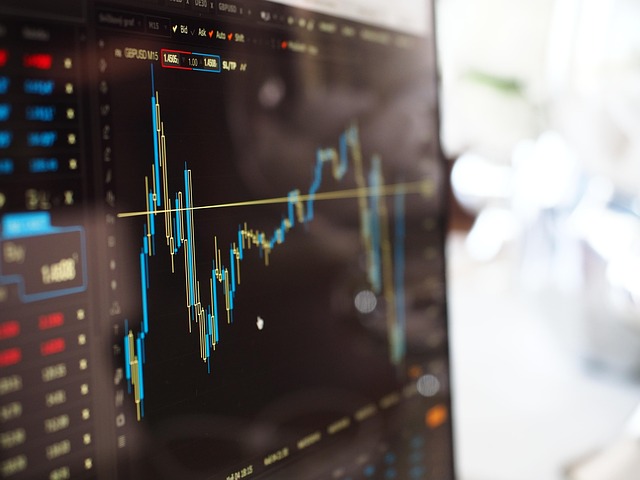NinjaTrader Market Data Price Explained: In-Depth Guide for Traders
Author: Jameson Richman Expert
Published On: 2025-08-26
Prepared by Jameson Richman and our team of experts with over a decade of experience in cryptocurrency and digital asset analysis. Learn more about us.
Understanding the NinjaTrader market data price is a cornerstone for traders aiming to maximize their trading efficiency and profitability. As a premier trading platform that caters to futures, forex, stocks, and options traders, NinjaTrader’s market data offerings can significantly influence trading costs, execution speed, and overall strategy effectiveness. This comprehensive guide provides an in-depth exploration of how NinjaTrader’s market data pricing is structured, the factors that influence costs, and how traders can strategically select and optimize their data subscriptions. Additionally, we compare NinjaTrader’s models with other platforms, emphasizing the importance of choosing data feeds that align with your specific trading style and goals.

What Is NinjaTrader Market Data? An In-Depth Overview
NinjaTrader Market Data encompasses the live, delayed, or historical financial information that traders rely on for informed decision-making. This data includes bid and ask quotes, last traded prices, trading volume, market depth (Level 2 data), and comprehensive historical price data. Such information is vital for technical analysis, backtesting, risk management, and order execution. Importantly, NinjaTrader itself does not generate or own this data; instead, it acts as an intermediary, connecting traders to external data providers such as major exchanges (e.g., CME, NYSE, NASDAQ) or third-party vendors (IQFeed, Kinetick, Barchart). These providers supply the raw market data streams—either real-time, delayed, or historical—that NinjaTrader visualizes through its advanced charting, analysis, and trading tools.
The quality, latency, and comprehensiveness of this data directly impact trading performance, especially in fast-moving markets like futures, forex, or equities. High-quality, low-latency data enables traders to react swiftly to market movements, place precise orders, and effectively manage risks. Conversely, poor data quality or latency issues can lead to missed opportunities, incorrect signals, and increased exposure to unfavorable price swings. Therefore, understanding the intricacies of data costs, features, and sources empowers traders to select the most suitable feeds for their trading strategies, ensuring they maintain a competitive edge.
Dissecting NinjaTrader Market Data Pricing Structure
NinjaTrader’s market data pricing is governed by a multifaceted ecosystem influenced by multiple variables. These include the type of data (real-time vs. delayed), the data source or exchange, licensing restrictions based on region, and additional features such as depth of market or historical data. Here’s a detailed breakdown of these components:
- Real-Time Data: Essential for active traders, scalpers, and algorithms, real-time data incurs subscription fees often set by the data providers or exchanges. The costs can range from as low as $10/month for basic Forex feeds to several hundred dollars for premium futures or equities feeds with low latency and extensive depth of market. For example, data from CME or ICE is more expensive due to licensing, demand, and infrastructure requirements, whereas forex data, often sourced from aggregators or liquidity providers, can be more affordable or even free through certain broker arrangements.
- Delayed Data: Usually available at no cost or for a minimal fee, delayed data is suitable for long-term analysis or less time-sensitive trading. Many brokers offer delayed data as part of their free services, which can be adequate for strategies that do not rely on real-time execution.
Pricing structures often include tiered subscription options—ranging from basic Level 1 data (best bid/ask and last traded price) to full-depth Level 2 data, historical tick data, and order book depth. Premium feeds with ultra-low latency, high update frequencies, and extensive historical coverage are priced according to exchange tariffs, often starting around $20-$30/month for modest access and climbing to several hundred dollars for comprehensive, high-speed data streams. Many data providers also offer annual subscription discounts or package deals that can reduce monthly expenses.
Factors Influencing NinjaTrader Market Data Costs: An In-Depth Analysis
Several interconnected factors determine the final cost of NinjaTrader-compatible data feeds. An understanding of these elements enables traders to optimize their data investments:
- Exchange Fees and Licensing Agreements: These are the core drivers of data costs. Each exchange sets its own licensing fees based on trading volume, instrument type, and regional policies. For example, futures data from CME involves substantial licensing fees due to high demand and technical infrastructure requirements. Equity and options data from major US exchanges also carry licensing costs, which are passed down to the end-user. Forex data, often sourced from liquidity aggregators, tends to be less costly and sometimes free, depending on the provider and broker arrangements.
- Type of Data and Additional Features: The inclusion of features such as depth of market (Level 2), streaming tick data, extended historical datasets, and full order book visibility significantly influence pricing. For high-frequency traders, ultra-low latency feeds with direct exchange connectivity are essential, and these come with premium costs due to the complex infrastructure involved.
- Regional Licensing and Regulatory Constraints: Data rights and licensing are subject to regional laws. US traders often face different licensing fees compared to European or Asian traders, depending on data distribution rights and legal stipulations. For example, European traders might pay different fees for market data due to MiFID regulations.
- Subscription Tier and Data Volume: Data providers typically offer multiple tiers—basic, advanced, and premium—based on the depth of data, frequency of updates, and historical data coverage. Higher tiers, which include comprehensive datasets and lower latency, are priced accordingly, allowing traders to tailor their subscriptions to their specific needs.
- Broker and Platform Bundles: Many brokers include data feeds as part of their account offerings, sometimes offering free or discounted access for active traders or high-balance clients. However, these bundled services can come with limitations like delayed data or reduced instrument coverage. Conducting a cost-benefit analysis between standalone subscriptions and broker-included feeds is crucial for optimal resource allocation.

Strategic Approaches to Access Affordable, High-Quality Market Data
Maximizing data quality while minimizing costs requires strategic planning. Here are advanced tactics for traders seeking the best balance:
- Define Your Trading Needs: Clarify whether your strategy demands real-time, ultra-low latency feeds (common in high-frequency or scalping strategies) or if delayed or limited data suffices (e.g., swing trading or long-term investing). This understanding guides your investment in data services.
- Direct Subscriptions to Exchanges or Data Vendors: For specific markets like futures or stocks, subscribing directly to the exchange can sometimes be more cost-effective and provide lower latency than third-party aggregators, especially if you require high volume and speed.
- Leverage Broker Promotions and Packages: Many brokers offer free or discounted data access, especially for active traders or high-net-worth clients. However, verify whether such feeds meet your latency and data depth requirements, or if they are merely sufficient for less demanding strategies.
- Utilize Free Trials and Demo Periods: Most data providers and platforms offer trial periods. Use these to evaluate latency, data accuracy, and completeness, ensuring they meet your operational needs before committing financially.
- Prioritize Data Quality and Latency: In high-speed markets, investing in premium, low-latency feeds—potentially colocated with exchanges—can translate into better execution and improved profitability in high-frequency or day trading contexts.
Comparative Analysis: NinjaTrader Market Data vs. Other Platforms
While NinjaTrader’s architecture provides flexibility through connection to multiple data sources, understanding its costs compared to other platforms can influence your choice. Key competitors include MetaTrader 5, TradeStation, Thinkorswim, and Interactive Brokers.
MetaTrader 5 often provides free or low-cost demo data, with optional paid upgrades for live data feeds. TradeStation offers integrated data packages tailored to trading accounts, often bundled with platform fees, with costs varying by exchange and data depth. Thinkorswim (by TD Ameritrade) includes free data for US equities and options but charges for premium feeds or international markets. Interactive Brokers (IBKR) offers extensive global data options with a flexible, pay-as-you-go pricing model based on the instruments and markets accessed.
NinjaTrader’s key advantage lies in its modular design, enabling traders to connect to various data providers, choosing the most economical or fastest options. This flexibility can lead to significant cost savings but requires active management and comparison shopping. When analyzing total costs, consider data subscription fees, platform licensing, commissions, and the latency needs dictated by your trading style. A comprehensive evaluation ensures you select a combination that maximizes your trading edge while controlling expenses.
The Critical Role of Quality Market Data in Trading Success
Access to reliable, low-latency market data is often the foundation of professional, sustainable trading. Inaccurate or delayed data can cause misjudgments, missed opportunities, or unintended trades that increase risk. Consequently, many professional traders prioritize premium data feeds to secure a competitive advantage.
Your trading objectives should dictate your data requirements:
- High-Frequency and Algorithmic Traders: Require ultra-low latency feeds, often colocated with exchange servers, to execute strategies in microseconds. Speed is paramount, and costs reflect this necessity.
- Swing or Position Traders: Focus more on extensive historical data for backtesting and trend analysis, with less emphasis on real-time updates.
- Day Traders: Need a balanced mix of real-time data, depth of market, and reliable execution to navigate volatile markets efficiently.
Selecting the appropriate data feed that aligns with your trading style enhances execution accuracy, risk management, and profitability. Weigh the trade-offs between cost, latency, and data depth carefully to build a robust trading infrastructure.

Additional Resources and Tools for Expanding Market Data Access
Expanding into new asset classes or markets can open additional opportunities. Here are some platforms offering attractive incentives, diverse data options, and potential cost savings:
- Binance: Offers real-time crypto market data, competitive trading fees, and advanced tools for digital assets.
- MEXC: Provides a broad range of cryptocurrencies with reliable data services, suitable for crypto traders seeking diversification.
- Bitget: Focused on derivatives and spot trading, offering high-speed data feeds for futures and crypto markets.
- Bybit: Known for high-speed digital asset trading, providing robust data services suitable for high-frequency crypto trading.
These platforms often feature promotional bonuses, flexible entry points, and a variety of data options, making them excellent supplements or alternatives to NinjaTrader-based data solutions, especially when expanding into new markets or assets.
Conclusion: Mastering Market Data Pricing for Optimal Trading
A thorough understanding of NinjaTrader’s market data pricing structure is essential for building cost-effective, high-performance trading setups. By carefully evaluating data providers, aligning features with your trading strategy, and staying informed about evolving data offerings, traders can ensure access to reliable, real-time information crucial for success. Continuous research, strategic sourcing, and technological adaptation enable traders to maintain a competitive advantage in today’s rapid markets, ultimately enhancing profitability and confidence. Mastering market data costs is not only about saving money but about investing in the quality and speed necessary for your trading edge.